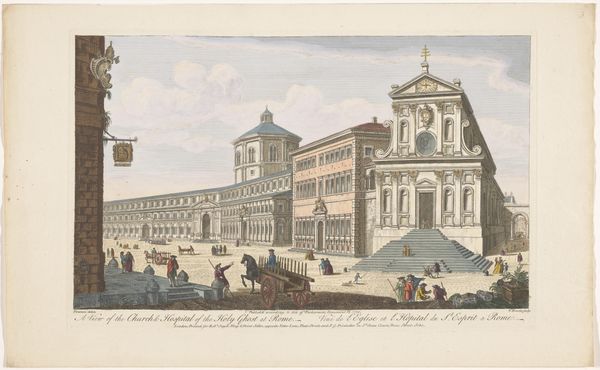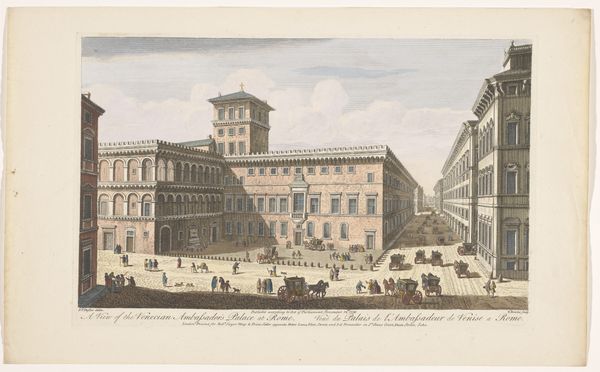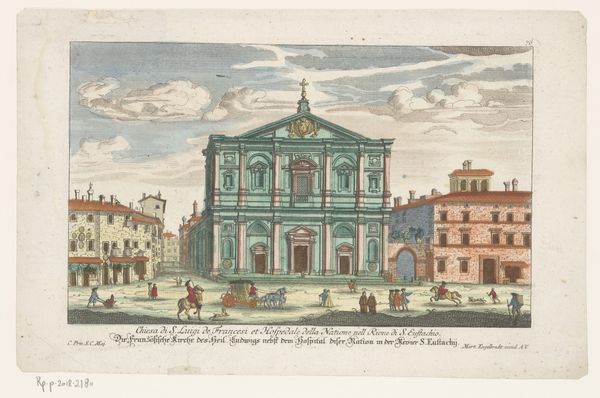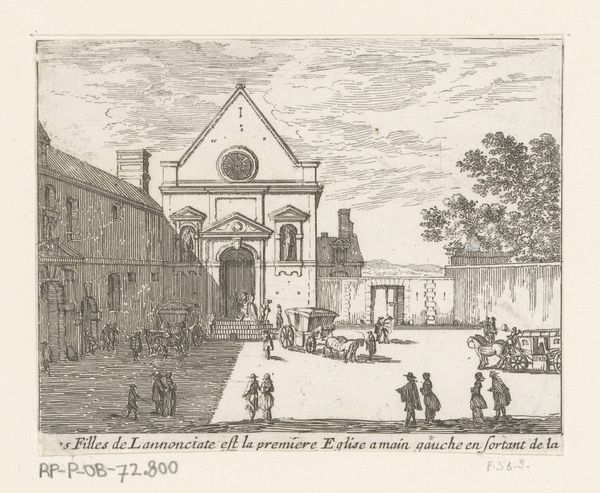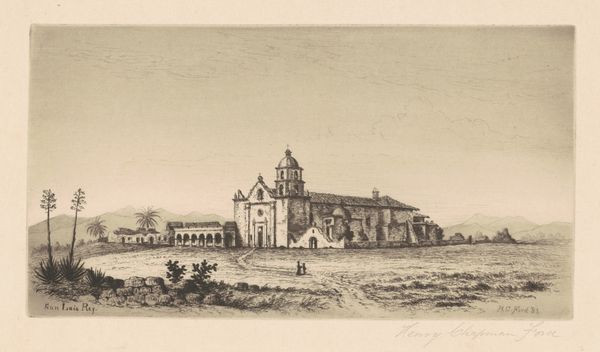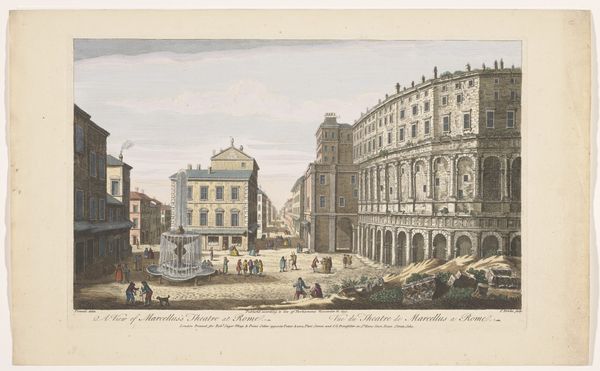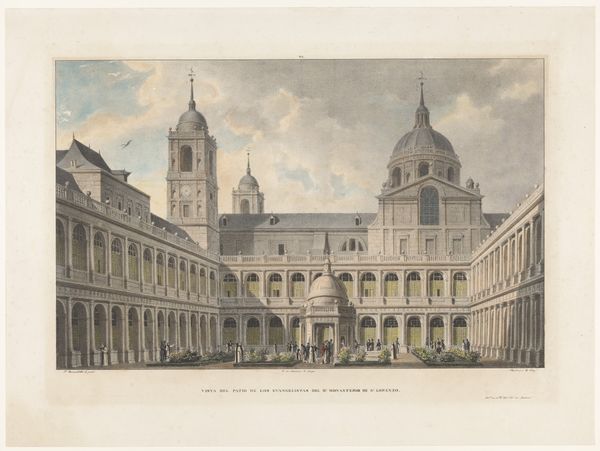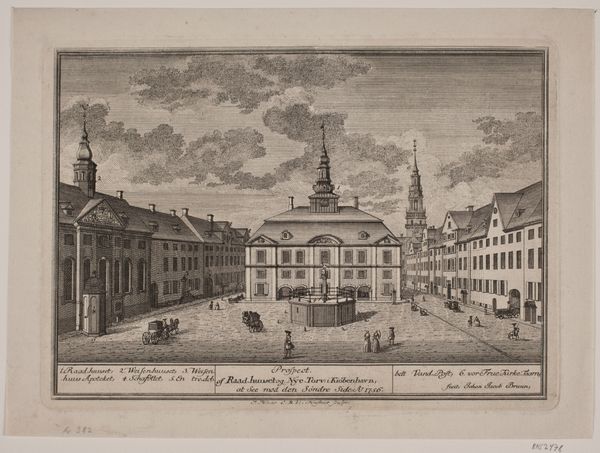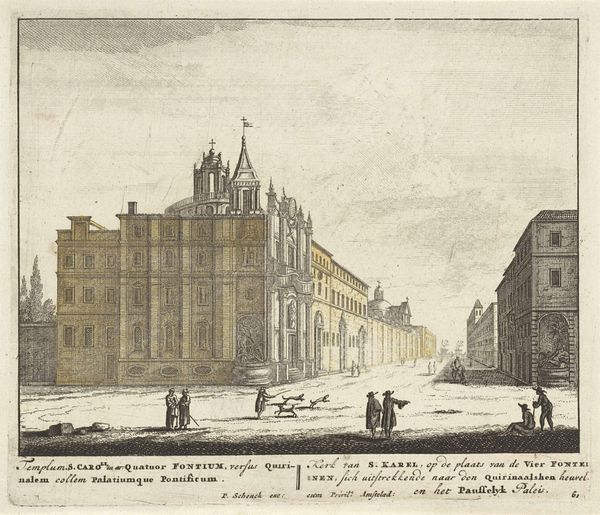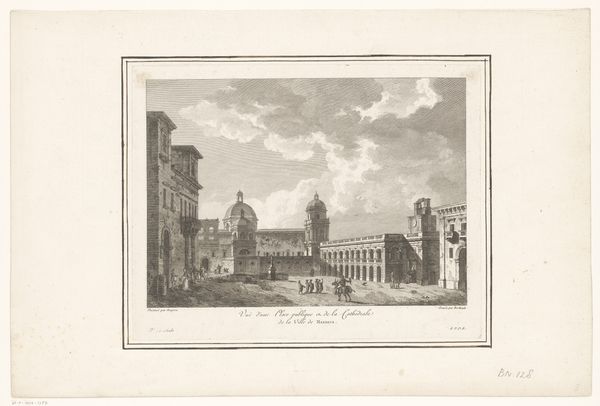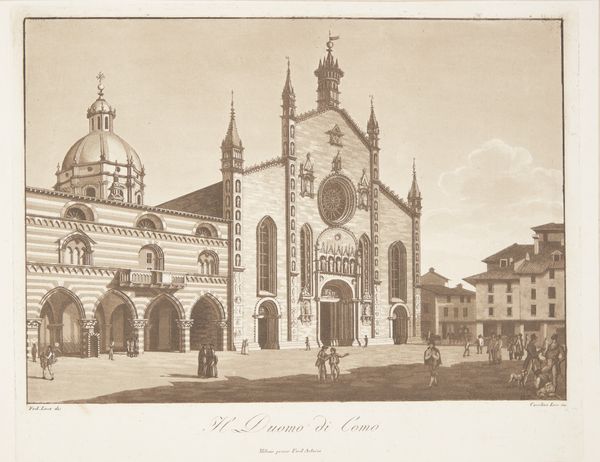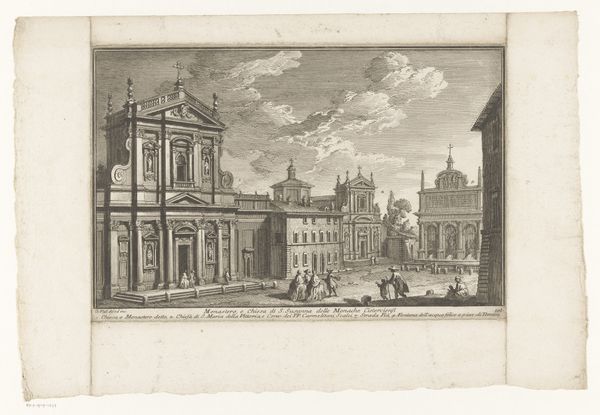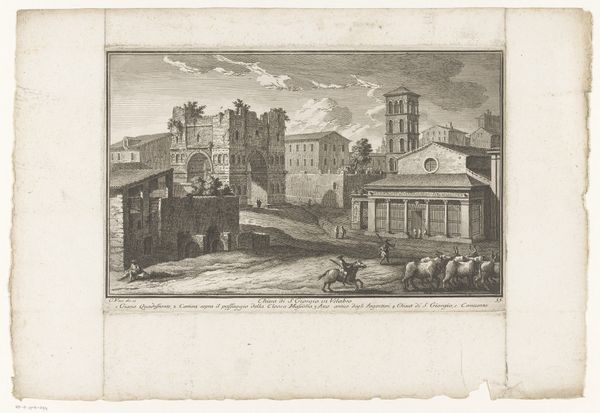
Gezicht op de kerk Sint-Sebastiaan buiten de Muren te Rome Possibly 1750
0:00
0:00
robertsayer
Rijksmuseum
painting, print, watercolor
#
baroque
#
painting
# print
#
landscape
#
watercolor
#
cityscape
#
genre-painting
#
watercolor
Dimensions: height 272 mm, width 428 mm
Copyright: Rijks Museum: Open Domain
Curator: What a lovely cityscape. The figures seem to animate the architectural landscape quite nicely. Editor: Indeed. Let’s delve into Robert Sayer's "Gezicht op de kerk Sint-Sebastiaan buiten de Muren te Rome," possibly from 1750 and held here at the Rijksmuseum. The rendering of the church is fascinating, and there are social dynamics at play in the composition. Curator: It gives me a rather melancholic feeling. Despite the bustling figures, there's something stark and uninviting about the church looming in the background. It's a powerful statement about religious institutions of that time. Editor: As a print, the artwork functions as a kind of early modern postcard, mediating views of Rome for a Northern European audience. Its charm perhaps lies in capturing Rome as a site of pilgrimage but also daily life. I wonder what political meaning was intended with the staging of the Roman church on the edge of town, or "buiten de Muren," as the Dutch title specifies. Curator: The placement and visual prominence granted to the Church begs for us to unpack its significance within the broader socio-political theater of the 18th century. The very composition centers religious authority within public life. This print engages questions of power, privilege, and religious hegemony and speaks volumes about social hierarchies. Editor: Yes, I see your point. Considering its production context and the social hierarchies it reflects, the artwork contributes to a complex image of Rome. It reveals the power dynamics embedded within architectural landscapes. Curator: Exactly. In this image, even the act of witnessing transforms the casual observer into a complicit participant. Sayer’s print captures not just a view of the Church but a snapshot of social roles and ideological entanglements in 18th-century Rome. Editor: Thinking about how Robert Sayer published prints such as these really foregrounds art’s social role during this time. He was capturing Rome for the world. It seems so aligned with our digital present! Curator: Definitely, thank you for opening up a window onto the forces at play in its imagery! Editor: Likewise, you have helped contextualize its deeper purpose.
Comments
No comments
Be the first to comment and join the conversation on the ultimate creative platform.
